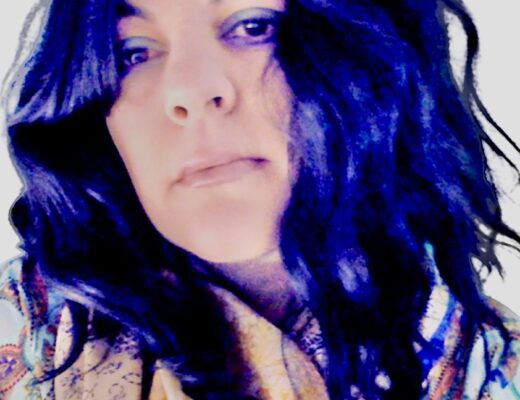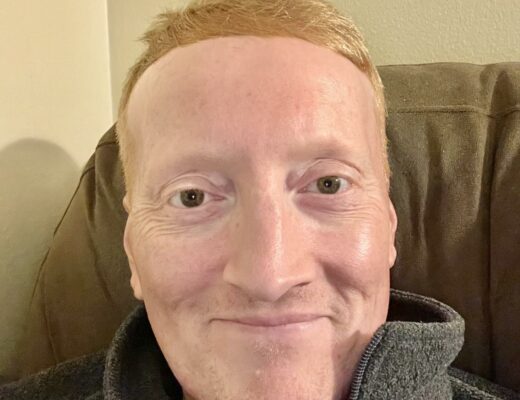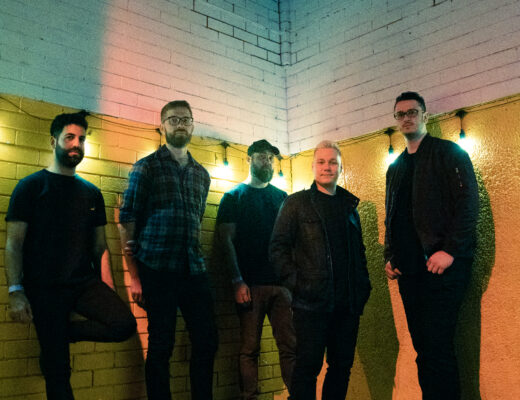Step into a world where music and storytelling intertwine, where ‘Sketches of Carol’ stands as a magnetic project with a name that’s more than meets the eye. In this intriguing conversation, we’re about to uncover the origins of this enigmatic title and the deep-rooted inspirations that fuel it. ‘Sketches of Carol’ invites us on a thrilling adventure across the cinematic realms of love and sci-fi, weaving a musical narrative that defies the boundaries of time and space. So, come along as we unravel the cosmic connections, embrace the cultural tapestry, and witness the collaborative enchantment that brings ‘Messengers’ to life—a promising start to a visionary musical journey
‘Sketches of Carol’ is an interesting name. Can you explain the thinking behind it?
The name Carol stuck with me after I watched a hauntingly beautiful film of the same title featuring Cate Blanchett and Rooney Mara in the leading roles. It portrays a love story between two women and the struggles they face in 1950s America. This inspired a remote collaboration with pianist, composer and producer Maria Chiara Argirò where we kept exchanging sketches of music that the other person would develop and transform. Both, the relationship of the characters in the film who are so supportive and loving with each other in the face of great suppression and the relationships I share with a group of super talented giving women in my UK artist network have inspired me to adopt this name for my project. Carol became a symbol of womxn support networks and sisterhood, of womxn and men who elevate each other knowing that we as a society can achieve so much more and live more fulfilled lives when we stand together.
The EP ‘Messengers’ draws from your affinity for science fiction and pays tribute to iconic films like ‘Blade Runner’ and Star Wars. How did you infuse these cinematic influences into the music?
My Dad is a big sci-fi fan, so I grew up spellbound by the stunning sound worlds and effects of those cinematic masterpieces. Think of that distinct melody that is used in ‘Close encounters of the third kind’ to communicate with a foreign species or the epic electronic soundscape Vangelis created for the opening of Bladerunner (1984). I wanted to capture this ‘otherworldly’ sound in Messengers.
Central to the track is a lulling loop of close harmony, which to me evokes the sense of endlessness in both time and space. The soaring melody shared by voice and violin that runs over the top has a searching quality that never repeats or arrives. All of this is bathed in a deep low-frequency noise aimed to subtly create the sense of a large space, vast and incomprehensible, just like the universe itself.
The theme of interplanetary communication and the Golden Record’s portrayal of Earth’s diversity are central to ‘Messengers’. How did you translate this concept into musical elements that convey a sense of connection and cultural richness?
Yes indeed – NASA’s Golden Record was sent into space on their Voyager spacecrafts in 1977. The record holds a selection of natural sounds (including some made by animals), music from various cultures and eras, human sounds like footsteps and laughter, and spoken greetings in 59 languages.
I was totally fascinated by this – how amazing it is to have a record floating around space which exists to introduce both planet Earth and humans to any spacefarers passing by. I started imagining my own small capsules of ‘natural life on earth’ – like fast-skipping through a load of documentary channels. It was such a rich source of material, I ended up writing the entire lyrics to Messengers in one complete flow.
The diversity across the spoken greetings, that the golden record transports, was my second point of interest. Despite all carrying the same sentiment of greeting a stranger for the first time, there was such a colourful variety of expression. It is a fantastic reflection of the luscious tapestry of human culture.
Could you share a particular moment during the creation of this EP when your improvisation led to a surprising and impactful musical direction?
I have been a vocal improviser for many years and the excitement of constantly reaching into the unexpected and shaping it as one goes along, is pure joy to me. In the EP, both the lead melody of Messengers and the ‘space trumpet’ effect that I created using my voice for the intro and outro, were improvised in single takes. There was no editing or rewriting. So, I would not exactly say that improvisation led to a surprising direction, but rather, that it is my default way of creating.
Collaboration seems integral to the EP’s success, with Gonçalo Abrantes’ production and William Newell’s layered strings. How did these collaborations contribute to refining your vision for ‘Messengers’.
The value and pursuit of connection is at the heart of all my performances, writing and projects. I cherish working with other artists, trying to understand their process, aesthetic desires and the language in which they express themselves. Will and Gonçalo both have a beautiful artistic sensibility. I chose to work with them because they have the ability to truly listen and distil what a piece needs to be elevated. Will does so masterfully in his work with Solem Quartet and Ensemble 26, and having worked closely with him in the minimalist trio White Flower, I did not feel the need to give more instruction than to trace my solo. I let him improvise the further parts, and boy did he put the cherry on the cake.
Working with Gonçalo was slightly more directed since his role as mixing engineer and producer was to breathe life into my space travel vision. A sci fi appreciator himself, he knew exactly what I meant by ‘that noise that you hear when the spaceship moves in above you in Star Wars, where you hear it before you see it’. But jokes aside, Gonçalo is a brilliant producer who has helped shape my ideas in a very distinct yet non intrusive way. We have already finished a second work that will be released in 2024. I very much look forward to continuing our collaboration. Btw, Gon is a wonderful songwriter and singer himself. Do check out his releases under the artist name Agon Branza.
As the first of four planned releases, how does ‘Messengers’ set the stage for the upcoming releases in the ‘Sketches of Carol’ project? What can listeners expect in the future releases?
For now, I have three more releases to come. Continuing with the theme of collaboration, each release features one instrument to accompany my a capella vocals.
There will be guest appearances of cellist Steph Tress, (also Solem Quartet), pianist and producer Maria Chiara Argirò (These New Puritans) and drummer Gaspar Sena (Valia Calda).
In terms of style, you can expect quite a variety across the upcoming releases – from the vocals and production elements. In points of theme, there is a piece on migration, one about communal grief and of course, there’ll be ‘Carol’, the piece that started off the whole project. I’m very excited to share all this with you!
Your upbringing in the Silesia region has left a significant mark on your creative journey. Could you share a specific memory or influence from your childhood that you’ve translated into your music?
Absolutely – I was born and raised in the three-country corner of Saxony, where East German, Czech and Polish traditions meet to form what is a very distinctive heritage of Lower Silesia. On top of that, I’m a GDR kid and while I was only 6 when the wall fell, the influences of russian and slavic aesthetics in film, music and local culture ran strong. For example, I grew up captivated by German and Russian fairy tales and I loved exploring folkloristic traditions, like the spring fires that are supposed to clear out winter and make way for spring. In my teens, it became an annual tradition in my family to visit mediaeval markets in self-made costumes and to pay our way at the food stalls by singing old ballads and folk tunes. All of this sparked imagination and playful creativity in me.
I also really loved singing from an early age and took any opportunity to use my voice – whether belting out 90s power ballads or singing German folk songs with my mom, sister and grandma.
In terms of artists I grew up listening to, my dad’s record collection (which he proudly played on his AWAY hifi system) had a real impact on me. I listened to a ton of amazing Stevie Wonder, Prince and Quincy Jones records, Pink Floyd, Peter Gabriel and Tower of Power as well as early electronic music like Yellow and Art of Noise. My mom loved great singer-songwriters like Carly Simon, Fleetwood Mac and Rio Raiser, and through my grandpa who sang in church choir and played a bit of organ I got introduced to choral and classical music like Händel and Bach.
Head over to https://www.sketchesofcarol.com to learn more!




No Comments